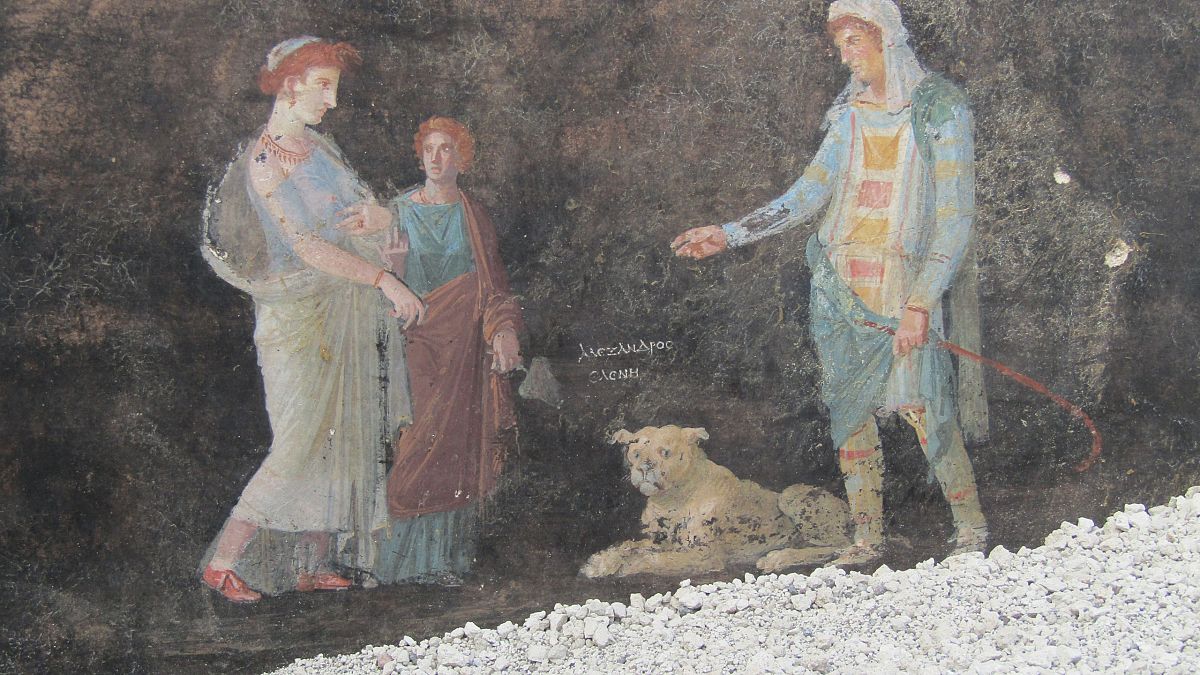Mythological figures are depicted in the halls of a Roman banquet hall discovered in Pompeii. The works were unearthed in almost perfect condition.
An imposing banquet hall, with elegant black walls decorated with mythological subjects inspired by the Trojan War, was discovered during ongoing excavation activities in insula 10 of Pompeii 's Regio IX and is now fully visible in all its glory.
The room was used to entertain in convivial moments for those living the "high life", evidenced by the spaciousness of the space, the presence of frescoes and mosaics datable to the 3rd style, the artistic quality of the paintings and the choice of subjects.
Frescoes on the Trojan War in Pompeii
The runnings themes of the artwork found on the walls seems to be that of heroism, with heroes and gods of the Trojan War most prominent on the walls.
Mythological figures in Roman homes had the social function of entertaining guests and diners, providing cues for conversation and reflection on existence.
In addition to Helen and Paris, the figure of Cassandra, daughter of Priam, appears on the walls of the hall, paired with Apollo. In Greek mythology Cassandra was known for her gift of foresight and the terrible fate that prevents her from altering the future.
Mythological figures in Pompeii houses to talk about life and the past
The walls of the banquet hall were painted black, "to prevent the smoke from the lamps on the walls from being seen. Here people gathered to feast after dark, the flickering light of the oil lamps made the images seem to move, especially after a few glasses of good Campanian wine," explains Pompeii Archaeological Park Director Gabriel Zuchtriegel.
"Today, Helen and Paris are all of us: every day we can choose to care only about our intimate lives or to investigate how this life of ours is intertwined with the great story," Zuchtruegel adds.
More than 13,000 rooms discovered in Pompeii
The hall measures about 15 metres long by six metres wide and opens into a courtyard that appears to be a service hallway, open to the sky, with a long staircase leading to the second floor, devoid of decoration.
Under the arches of the staircase, a huge pile of yard material was found and set aside. Someone had drawn in charcoal on the rough plaster of the large staircase arches, two pairs of gladiators and what looks like a huge stylised phallus.
The excavation activity is aimed at protecting Pompeii's vast heritage more effective and sustainable, which has more than 13,000 rooms in 1070 dwelling units, in addition to public and sacred spaces.
Excavation in the area so far has returned two interconnected dwellings, the facades of which were already brought to light in the late 19th century. Behind these two houses, sumptuous frescoed living rooms are emerging at this stage of excavation, again affected at the time of Pompeii's eruption, by major renovations.
